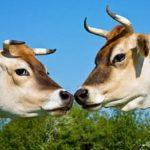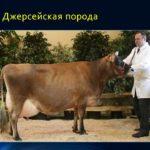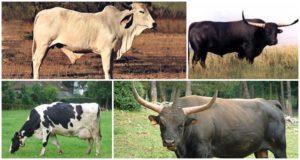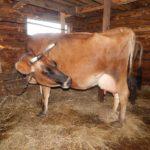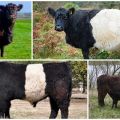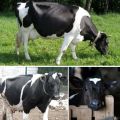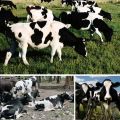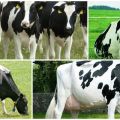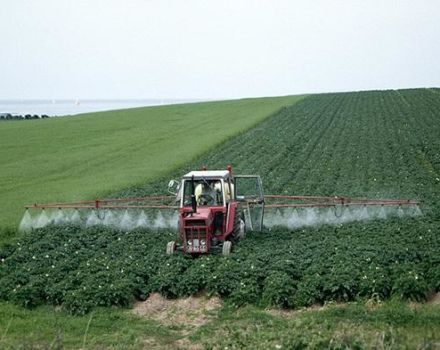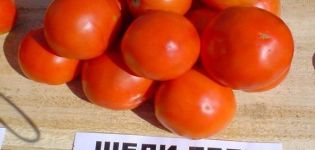Description and characteristics of the Jersey breed of cows, the pros and cons of cattle
Jersey cow can be considered one of the best, as it combines high milk production and unpretentiousness. At the same time, all its advantages were appreciated relatively recently, and only recently did Russian breeders actively engage in breeding it. Unfortunately, this breed cannot be called meat. The fact is that all the nutrients go to the production of milk with high fat content.
The history of the origin of the Jersey breed of cows
It is now almost impossible to establish from which varieties the Jersey breed originated and when exactly this happened. However, the original habitat of the cows is certainly known - the island of Jersey. This territory is part of the UK and is located in the English Channel. The local population was engaged in animal breeding. Burenka were selected in accordance with the fat content of milk: the higher the better.
Scientists suggest that the ancestors of the Jersey breed are certain types of Norman cows, mixed with other breeds. The breeders managed to achieve unprecedented results, in connection with which a law was passed that prohibited the import of any livestock to the island. Thanks to this, crossing with representatives of other breeds was excluded, which would lead to a decrease in the quality of milk.
Appearance and characteristics
The main features of the breed are:
- Compact physique. At the withers, animals reach about 1.3 meters.
- A cow weighs approximately 400 kilograms, and a bull's body weight reaches 700 kilograms. Calves weigh 20-23 kilograms at birth. The musculature is poorly developed.
- The Jersey breed has a red color. There are also brown cows in combination with dark spots.
- The limbs are straight, long.
- The back has an arched curve.
- Skin folds are present on a thin and long neck.
- The head is small, the forehead is narrow, the horns are very small or completely absent.
- The sternum is narrow, shallow.
- The tail is long.
- The back of the body is raised.
- Developed udder.
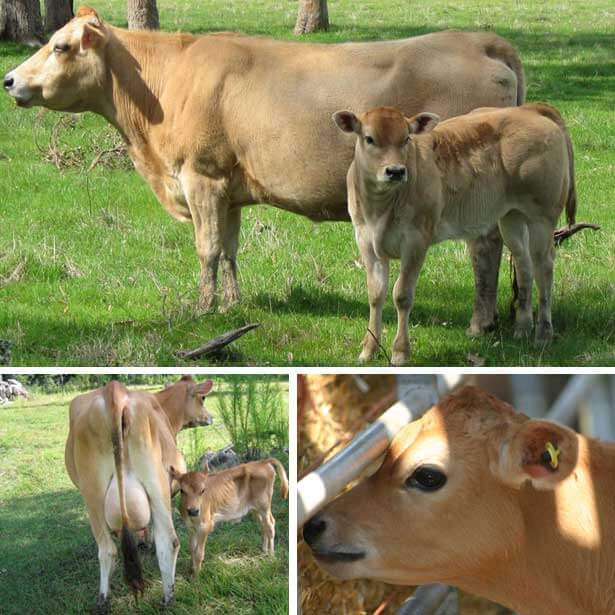
With regard to productivity, the daily volume of milk received is about 32 liters.A cow gives up to 4 thousand kilograms of product per year (maximum - 11 thousand).
Milk has a high fat content - from 5 to 8 percent. In addition, it has a pleasant smell and excellent taste. Due to these properties, the Jersey cow became known as the "small dairy".
Pros and cons of the breed
Like any other species of cattle, this breed has a number of advantages and disadvantages.
Maintenance and care rules
In summer, cows are walked in the pasture throughout the day. In winter, animals are kept in a regular barn. The room has standard requirements:
- Fresh air due to good ventilation.
- Lack of drafts.
- Systematic cleaning of premises.
- Adequate lighting (both natural and artificial).
- The presence of a heating system.
- Lack of hustle and bustle nearby.
- Regular examination by a veterinarian, vaccination.
What to feed animals
In winter, animals are fed with hay in the amount of 16 kilograms per head per day, and in the form of a supplement they use compound feed, root crops, straw and concentrates. Since the Jersey have a compact build and do not differ in gluttony, they do not need large amounts of food.

It is desirable that the feed contains more protein. This helps to increase milk production. It is also recommended to decompose the salt in the barn to replenish the lack of trace elements in the animal body.
Breeding subtleties
Puberty in cows occurs at two years of age. Calving takes place independently and without complications, that is, human participation is not required. Calves are born weak and therefore need special care:
- Immediately after birth, the calf is wiped and applied to the udder (within the first hour).
- Young animals feed only on milk during the first weeks.
- Upon reaching the age of one month, complementary foods (vegetables) are introduced into the diet.
- At two months, calves can be released to pasture. From this point on, the daily intake of fluid should not exceed three liters.
During the first twenty days after giving birth, the heifer is kept on mixed feed. The cow should drink boiled and chilled water no more than 2-3 times a day in small quantities.
Diseases and their treatment
The breed is resistant to pathologies, provided that the owner observes all the rules of care. If this does not happen, as well as in the event of foci of infection in the area where the animals are kept, cows may develop leukemia, leptospirosis, and actiminosis. Also, lack of hygiene leads to the development of helminthiasis.
What to look for when choosing a cow
To make sure that the animal is healthy, you need to pay attention to the condition:
- udder;
- teeth;
- hooves;
- skin;
- horns;
- joints.

The following sign indicates high productivity: the udder after milking is significantly reduced. The body weight of a dairy cow must be at least 300 kilograms. The most important sign of a high fat content of a product is the presence of sulfur mass in the ears.
Among the folk signs that indicate the good condition of the animal:
- long tail;
- large space between the ribs;
- massive chest.
Perspectives
Jersey is profitable to breed as a dairy breed. The meat direction is excluded, since the amount of product obtained at the exit is much less than the costs invested in this process. Therefore, it is worth fully concentrating on the dairy focus of Jersey cows.
In Russia, the breed is suitable for breeding. Jerseys do not give much milk, but the quality of the product compensates for the lack. However, if you plan to get large volumes of cheap milk, you should choose a different breed. Jersey cows are deservedly considered one of the best dairy breeds in the world. For breeding to be effective, it is important to take into account a number of features and nuances that apply to this breed.

